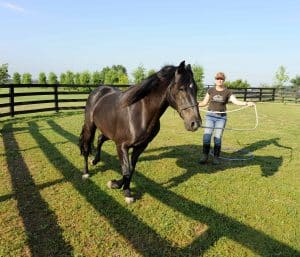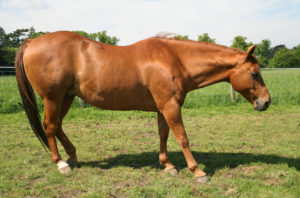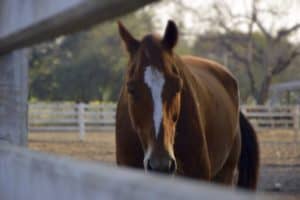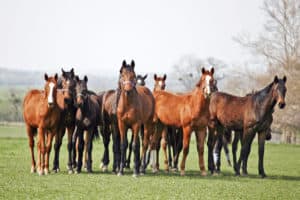
Horse Trainer or Behaviorist: What’s the Difference?
Drs. Camie Heleski and Jenny Biehunko explain the differences between a horse trainer, an animal behaviorist, and a veterinary behaviorist.

Drs. Camie Heleski and Jenny Biehunko explain the differences between a horse trainer, an animal behaviorist, and a veterinary behaviorist.

In this episode learn about treating sweet itch, dealing with hair loss in itchy horses, and managing EMS and allergies, among other topics. Sponsored by KineticVet.

Dr. Anna Pesta-Dunaway explains the best ways to manage and prevent ulcers in competition horses in this clip from Ask TheHorse Live.

Dr. Anna Pesta-Dunaway describes the basics of helping the competition horse build muscle in this excerpt from Ask TheHorse Live.

Dr. Shannon Pratt-Phillips describes considerations you should make when switching your competition horse to a forage-only diet.

Dr. Anna Pesta-Dunaway talks about the change in nutritional needs that occurs as horses age and how to manage it if they are competing.

Equine athletes have specific nutritional needs that must be met to keep them performing their best. Sponsored by Purina.

Dr. Lori Bidwell lists pain relief medications and therapies that can help horses with acute or chronic laminitis.

When a pain medication or strategy is no longer providing a senior horse with relief, the kindest option might be euthanasia.

While NSAIDs are valuable tools for controlling horses’ pain and inflammation, they do come with risks.

Dr. Uneeda Bryant describes how veterinary pathologists safeguard horse populations, determine causes of death, and protect the human-animal bond.

Dr. Clair Thunes offers advice for preventing colic when the weather turns cold.

A veterinarian explains how to recognize when your horse is in pain.

Learn about the signs of pain in horses—and how sedation can help—in this archived podcast.

Dr. Lutz Goehring weighs in on what researchers have learned about equine herpesvirus-1, how it spreads, and how to prevent infection.

Dr. Brian Nielsen describes what osteochondritis dissecans is, what causes it, and how it can affect horses during their lifetimes.
Stay on top of the most recent Horse Health news with
© 2022 Copyright Statement dolor sit amet, consetetur sadipscing User Terms, sed diam nonumy eirmod tempor invidunt ut labore et dolore magna aliquyam erat, sed diam voluptua. At vero eos et accusam et justo duo dolores et ea rebum. Stet clita kasd gubergren, no sea takimata sanctus est Lorem ipsum dolor sit amet.
"*" indicates required fields